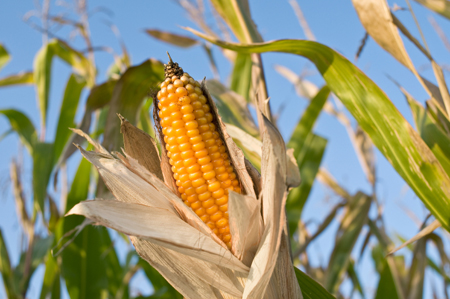USDA Crop Progress: Soybean Quality Up, Corn Steady
Category: Grains
 (Farm Futures) – Bucking expectations, USDA indicated in its latest Crop Progress report that the current corn crop’s quality has held steady from the week prior, at 72% rated in good-to-excellent condition – and the current soybean crop’s quality ticked a percentage point higher, reaching 70% good-to-excellent.
(Farm Futures) – Bucking expectations, USDA indicated in its latest Crop Progress report that the current corn crop’s quality has held steady from the week prior, at 72% rated in good-to-excellent condition – and the current soybean crop’s quality ticked a percentage point higher, reaching 70% good-to-excellent.
Industry analysts expected USDA to lower its crop quality assessment for corn to 71%. On a state-by-state basis, some states did indeed go down – most notably Michigan and Ohio – but increases in other states gave the overall nationwide score a small lift. The nationwide corn crop rating continues to track significantly higher than last year’s pace, when 57% of the crop was in good-to-excellent condition by late July.
Another 19% of the corn crop is rated fair, with the remaining 9% rated poor or very poor, unchanged from a week ago.
“Though corn conditions varied sharply between eastern and western states, overall yield potential bounced back by around six-tenths of a bushel nationwide,” says Farm Futures senior grain market analyst Bryce Knorr. “If ratings hold until harvest, this suggests record yields of 180 bushels per acre are possible, at least according to the ratings. Even factoring in the stage of development, yields could still hit 178 bpa, though Vegetation Health Index maps are only 171 to 174 bpa.”
Physiologically, this year’s corn crop continues to mature faster than average. Eighty-one percent of the crop has reached silking stage, up from 2017’s pace of 63% and a five-year average of 62%. And 18% has reached dough stage, up from 2017’s pace and the five-year average, both at 8%. As expected, southern states Texas (65%), Tennessee (64%) and North Carolina (63%) lead the charge, with several Midwestern states quickly gaining ground.
Analysts also expected USDA to downgrade the soybean crop this week, moving it from 70% in good-to-excellent condition to 69%. The agency, in contrast, rated the crop a percentage point higher, moving it to 71% good-to-excellent. Another 22% of the crop is rated fair (down 1% from last week), with the remaining 8% rated poor or very poor (unchanged from last week).
Several states fall well short of that average, including Missouri, North Carolina, Michigan and Kansas. However, other states with percentages of good-to-excellent soybeans reaching into the 80s kept the nationwide average pointed in a positive direction.
Soybeans also gained back losses” from the previous week, with average yield potential up four-tenths of a bushel per acre according to our ratings model, improving to nearly 51 bpa if conditions hold until harvest,” Knorr says. “Confidence in these early soybean ratings is still fairly low, however.”
Physiologically, the 2018 U.S. soybean crop has stayed ahead of average. More than three-fourths (78%) of the crop is now blooming, compared to 67% this time last year and a five-year average of 635. And 44% of the crop is setting pods, compared to 27% this time last year and a five-year average of 23%.
Spring wheat condition met analyst expectations, meantime, moving from 80% good-to-excellent the prior week to 79%. But because the percentage rated excellent moved up a percent, yield potential also moved slightly higher, Knorr says.
“Spring wheat posted gains thanks mostly to improvement in North Dakota,” he says. “Average yield potential gained only one-tenth of a bushel per acre nationwide, however, to 50.7 bpa.”
Another 17% of the crop is rated fair (up from 16% the prior week), with the remaining 4% rated poor or very poor (unchanged from a week ago).
Ninety-six percent of this year’s spring wheat crop is headed, slightly ahead of last year’s pace of 95% and the five-year average of 93%.
The 2018 U.S. winter wheat harvest is tracking close to normal at 80% complete, up from 74% the prior week. That mostly matches the pace of 83% set in 2017 and a five-year average of 79%. USDA lists seven of the top 18 production states as 100% complete, including Arkansas, Illinois, Kansas, Missouri, North Carolina, Oklahoma and Texas.




